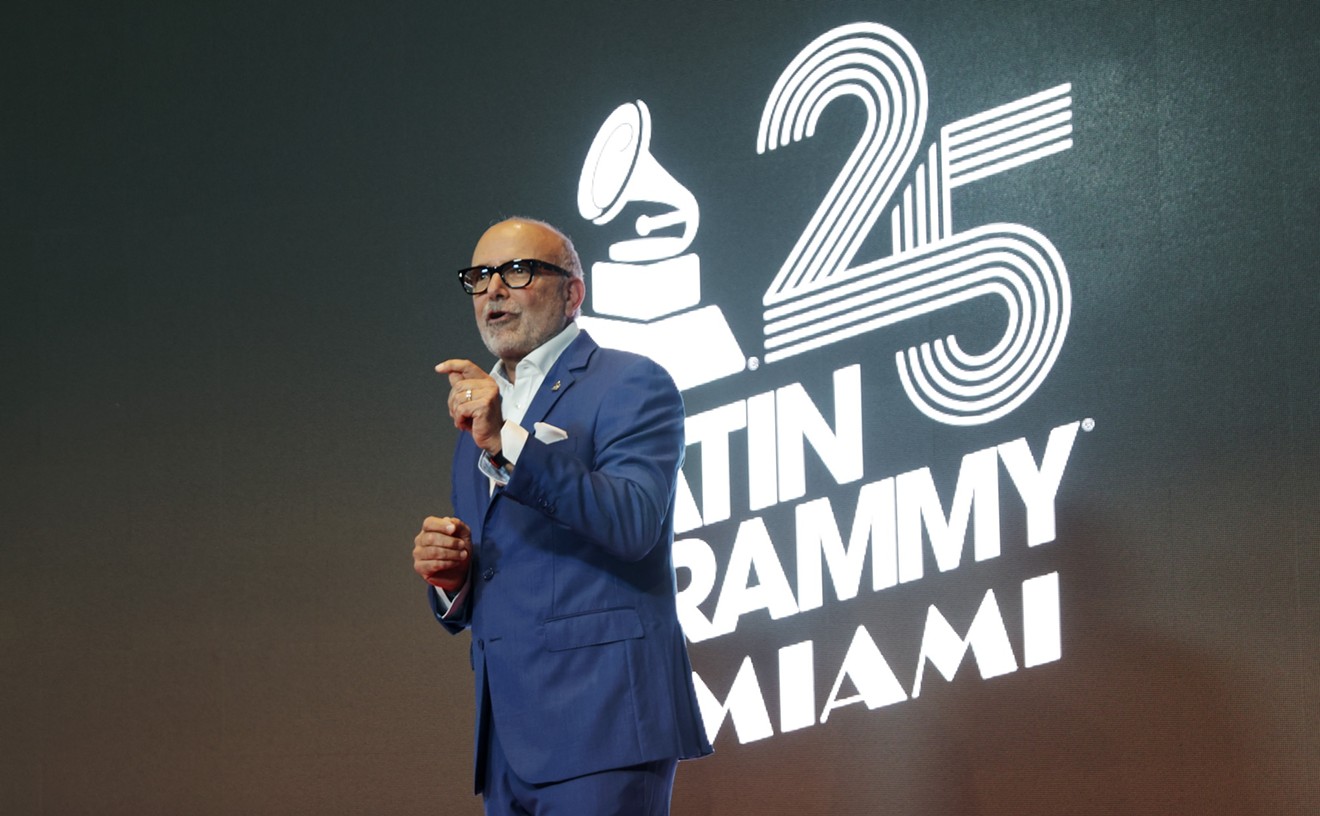This rejection of individualistic stardom, indeed, of discrete identity period, has been co-opted and borrowed by statement-makers from the Blue Man Group to the arts collective Guys in Suits. But Kraftwerk disperses and controls its robotic imagery with great discretion, avoiding overkill, and despite a long and recently ended sabbatical, has a musical signature as significant and influential as its trademark vision.
Touring behind their 2003 album Tour de France Soundtracks, Kraftwerk's first disc of new material since 1986, Ralf Hütter is apocryphal about what the German forefathers of electronic pop have been doing for the past decade and a half.
"We've been working on some minimalist work independent of our Klink Klang Studio," demurs Hütter, who is now one half of the group with original member Florian Schneider. Klink Klang is Kraftwerk's notoriously secret headquarters in Düsseldorf. When the occasional intrepid fan unearths the coordinates and writes a letter to Kraftwerk, the envelope is returned to sender unopened. Klink Klang, in addition to being a physical structure containing a studio, also serves as a sort of brand name, or label, under which Kraftwerk's music is released.
"We do a lot of drawings," he says when pressed about what he and Schneider do during their long breaks from Kraftwerk. "A lot of multimedia projects. We write the scripts for videos. All these projects have been slow in the making, but they are going in our direction."
Schneider and Hütter met at college in Germany in 1969, and were inspired by the program music of John Cage and Karlheinz Stockhausen. The duo first formed Kraftwerk in 1971, issuing the German LP Kraftwerk 1. Over the years, the group has included Karl Bartos, Wolfgang Flür, Henning Schmitz, Fritz Hilpert, and Emil Schult, all of whom (with the exception of Schult, who is a successful painter) have gone on to solo music careers. Its first U.S. release, 1974's Autobahn, contained the all-synthesizer eponymous 23-minute-long single, as well as the first use of the vocoder on a pop record.
"We actually come from improvised live music," says Hütter, referring to the dadaist collective Cabaret Voltaire (not the band of the same name). Indeed there is a bit of wry, chaotic humor in Kraftwerk's tightly controlled soundscapes. Remarking on the faint smirks audible in tracks such as "The Model" (from 1978's The Man Machine) and "Musique Non Stop" (from 1986's Electric Café), Hütter conveys the same droll, mannered humor and reflects the same embrace of and resignation to the ubiquity of easy-access technology as Kraftwerk's songs do: "It's funny the way a pocket calculator is. It's a social commentary, but in the context of our life and our obsessions."
The difficulty involved in touring and composing -- the band found it taxing lugging around old-school VW-sized hard drives, says Hütter -- caused Kraftwerk to retreat from public life in the Eighties, just as its music began to take hold and influence other artists of the era such as Thomas Dolby, Underworld, and Heaven 17. The band had also become a crossover hit in burgeoning urban dance circles, attracting fledgling hip-hoppers and DJs as well as those simply amazed at what was at the time the novelty of completely nonspontaneous and totally programmed synthesizer music. Kraftwerk had always eschewed a live drummer, relying instead on rhythm machines (including some hand-built by Schneider) and Moog synthesizers (upgrading through the years) to go along with their projected aesthetic of robotics and anonymity.
Kraftwerk would have percolated quietly along doing whatever, occasionally resurfacing (Hütter insists Tour de France Soundtracks is not a comeback tour or album) in pretty much the same form. But in the seventeen years between the release of "Computer World" and now, something happened. Specifically, Afrika Bambaataa and the Soul Sonic Force happened.
In 1982, Bambaataa, already a Kraftwerk fan and no stranger to futuristic visions himself (he later collaborated with Johnny Rotten from the Sex Pistols on the stylistically oppositional but danceable single "World Destruction") made an artistic decision that has changed the course of music history. Casting about for another layer to add to some languorous percussion tracks he had recorded, Bambaataa came across the "Trans-Europe Express" single. His resulting combination of chest-rattling beats and Old World, minor-key Korg work became the peerless sensation "Planet Rock." What seemed a side effect -- sampling Kraftwerk's synth and bass lines -- quickly became de rigueur for technology-minded record producers and DJs looking for a fast blast of Euro-cool.
"The electro culture is everywhere here," Hütter marvels by phone in Rio de Janeiro, where he's ensconced in a cliffside hotel before an evening performance. He admits that he may be drawing some inspiration from the rediscovered pleasantries of touring.
"This tour has given me many different scenes to work with," he continues. "We started in Scandinavia in the winter, and ran into some strange cultural situations in Moscow, in the snow. So I'm thinking about climactic changes, weather-related sounds."
"Aero Dynamik," one of the new songs from Soundtracks, is pretty typical Kraftwerk fare and a sturdy bridge from the past to the present. The song has a restrained, syncopated keyboard melody and a drum machine click-track; it sounds both brilliantly spare as well as something the Mathletes from the film Mean Girls could have come up with during detention. The music of Kraftwerk, a source of samples for so many other artists, sounds just slightly academic precisely because it is wholly original and without musical references to other artists. This is not to say Kraftwerk doesn't use other sonic textures; the entire Trans-Europe Express album was dedicated to and uses noises from train stations in Germany and France. Released in 1977, Trans-Europe Express was the inspiration for Orchestral Manoeuvres in the Dark's 1983 masterpiece Dazzle Ships, which was recorded in a British shipyard.
Hütter is sanguine about Kraftwerk's buttoned-down image and possible legacy.
"Music is in no way coming close to what electronics can express. The interaction of man and machine is only now being realized," he says. "But I don't want to tell people what to think about Kraftwerk, not even specific songs. Our music is like a guide, not a script, for your thoughts and imagination. Listen, and make up your own history."










